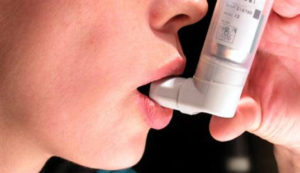May 15, 2014 | Black & Kletz Allergy
Asthma is one of the most common chronic diseases afflicting both adults and children. Over 20 million Americans suffer from this condition and more than 6 million of them are children.

by passage of air through narrowed tubes).
These bothersome symptoms impact the quality of life of an asthmatic. Many experience lost work and/or school days. Sudden flare-ups of asthma can be triggered by exposure to allergens (dust mites, molds, pollens, pets, etc.), strong scents (perfumes, colognes, cleaning fluids, etc.), upper respiratory infections, exercise, cold air, increased humidity, cigarette smoke, medications (certain blood pressure medications, etc.), as well as other factors. Asthma can be life-threatening. However, there are effective treatments available which can control the inflammation, preserve the lung function, and prevent the symptoms and exacerbations of asthma.
The goals of treatment of asthma are to use the least amount of medications that can achieve the above objectives, taking precautions to minimize the side effects. This calls for identification of the specific triggers (which can vary from person to person) and their avoidance, choosing the correct medication (whether is be inhaled, taken by mouth, or injected such as allergy shots) at an appropriate dosage, and close monitoring of symptoms and lung capacity to enable either stepping-up or stepping-down the treatments at regular intervals.
The board certified allergists at Black & Kletz Allergy practice have received advanced training in the management of asthma and constantly keep themselves abreast of the latest developments in evidence based medicine. They are committed to utilize their expertise and years of experience in treating asthma in children and adults to thoroughly educate their patients and offer individualized treatment plans following national guidelines and practice parameters.












